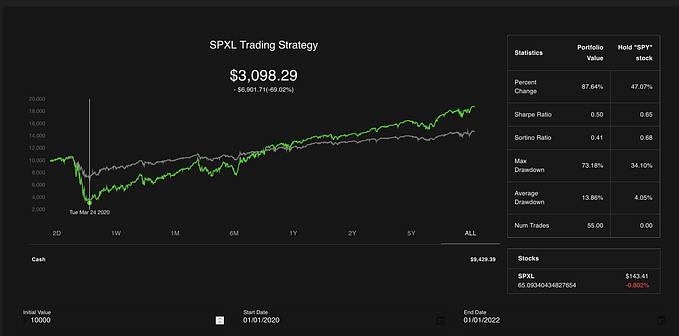Database APIs: Benefits, Limitations, and When You Should Switch to Datasets

Choosing the right data solution for your business can be a challenging process because there’s a wide selection of them, and even the same data can be processed and packaged differently.
I’m here to help you understand when you should consider using database APIs, why this solution is popular, and when it might not be the right choice for your company.
What are database APIs?
Let’s start with a definition of a database API. To put it simply, an application programming interface (API) is a technology that allows applications to extract and exchange data. Data vendors from the web data industry offer APIs as a method for clients to get specific types of their data.
An API may be used for getting data that is used internally for generating insights or powering some part of your project on the back end, but it can also be integrated into the user-facing tools, such as search engines of a platform you’re building.
In this article, we will be specifically analyzing database APIs, which make it easy for companies to extract relevant data from data vendors’ databases.
When should you use a database API
Based on my experience, there are various ways that companies can benefit from having direct access to fresh B2B data on demand, but there are a few common situations when this data solution is the most convenient option. All in all, you can decide if an API is a good data solution for your business from the perspective of the product, overall readiness, budget, tooling, and technology.
First, let’s talk about the budget. Compared to, say, datasets, APIs are often the cheaper option popular among companies with smaller budgets for data.
Budget limitations are closely related to the limitations of the project itself. You may be in the very early stages of developing a new project. Naturally, you will likely consider starting with a POC (proof of concept) to build something that doesn’t require a lot of investment regarding resources.
What’s more, when it comes to opting for a data API during the POC stage, if you’re at the very early point of your product development, likely, you don’t have the processes in place that allow you to combine, process, and use large volumes of data or data from multiple sources at once.
Because a database API is a tool that can be integrated into an interface available to users, for example, a search field of a dashboard, it already saves a company from a lot of hassle. When using a data API, what’s left to do is some processing that would make the information more tailored to the product, like eliminating irrelevant fields and visual presentation of data.
When using the API, the database’s maintenance is the data vendor’s responsibility.
Another important question when choosing a data solution is if you already have a data pipeline and work with other data vendors. If you already have your database and your product is based on it, you may benefit more from buying an extensive dataset. If you want to enrich or update specific data records in your database, an API would be a suitable solution, so it’s important to consider these questions.
To sum up, here’s what you should take into consideration:
- Budget;
- Product maturity level;
- Data team setting;
- Technological capabilities;
- Existing data pipeline (if you have one).
Choosing a database API
Data quality. The most important thing to remember is that a data API is as good as the data you get when using it. Additionally, data freshness and coverage may be important factors to consider if they are relevant to your product.
Data freshness. When it comes to freshness, it’s important to evaluate if the data connected to the API is not stale. If data is not updated regularly, it won’t be suitable for tracking changes or discovering something.
Raw data. If you’re considering using a database API that provides scraped data from a specific source relevant to you, it’s important to evaluate how raw is the data you’re getting. When processing and transforming scraped data, the provider makes changes, for example, combines multiple sources, merges, or creates new data fields, and as a result, this data might no longer suit your use case. On the other hand, it might be a benefit. It all depends on business needs.
Provider’s reliability. Take into account compliance and data security measures. A database API is a two-way exchange of information. You reveal sensitive business information by querying a database, so choose your data partners wisely. Check social proof like reviews and testimonials of data provider’s clients before committing.
Provider’s experience. I recommend finding an experienced data vendor because the web data industry is prone to changes that can be challenging to adjust to without expertise.
Example use cases of database APIs
To give examples of how companies leverage database APIs, I must provide some context about a solution I am working with.
Our clients are businesses that need fresh B2B data and often come from HR technology, sales technology, and investment industries. Using database APIs, they can get public company, employee, and jobs data scraped from public web sources.
Here are some examples of what our APIs are used for:
Investment research
An investment company can use a database API to get data on companies they are interested in or to find new opportunities by looking for promising entrepreneurs.
For example, a company data API may be used to get as much valuable data as possible about a company when the investment firm only has its website URL. Investors may also be interested in getting data on the talent pool of that company, such as checking previous workplaces of the people in leadership positions.
Data enrichment
Companies that help businesses find the best-fit talent benefit from database APIs because they get access to extensive datasets containing information about business professionals. Do you need to have data on as many candidates as possible at all times, or do you need specific data records of candidates that fit specific criteria?
Especially if the data is being refreshed regularly, an API is a great tool for sourcing potential candidates that fit specific criteria or for enriching data on candidates they already have in their database.
Lead generation
Similarly to the examples mentioned above, sales technology companies use APIs to get data on companies and business professionals that fit their ideal customer profile criteria and may be interested in their products.
Database API limitations
Although the examples above show various ways to use a database API, there are also some possible limitations.
One is that querying the database is usually possible in the frame of specific search criteria. So, it is not a convenient option if you want to find insights about open-ended questions, like global trends of particular industries.
Another reason might be that you have passed the POC phase, and an API doesn’t meet your scaling ambitions — you might prefer using large files and consuming data differently.
Not having to manage a database on your own is a benefit, but at the same, it makes an API user quite dependent on the availability of the API. Whether you are the API response’s end receiver or your platform’s client, service discrepancy might cause issues. Of course, there are other ways to avoid that, such as having a plan B when data needs to be accessed offline.
Similar to what I’ve discussed earlier, the reliability of the data provider can also become a limitation, especially due to issues related to prompt communication. For example, if a data provider changes the data structure or even a little part of it, like a data field that is relevant to you, it might affect your operations.
Even the smallest changes might require quite a bit of preparation on your end, so it is important to get notified early. Consistency is essential when working with web data, and a reliable provider can ensure it, but using an API still means you have less control in some situations.
Database APIs vs. raw datasets
In my experience in the web data industry, the need for creating a database API product came from working with companies that want raw web data but don’t make use of large datasets (at least not yet).
Datasets are a good solution for businesses that want to discover what they don’t know, and API is a great choice for those that already have a good understanding of the exact search criteria they have and the answers they expect to find. In other words, datasets can answer open-ended questions, and APIs complete requests based on predefined criteria.
However, an API can easily be used for creating a subset. Let’s say you are using an API to access a CV database. Using an API that allows you to search for records based on specific parameters, you can get only those resumes that fit your criteria.
Usually, APIs are utilized in smaller-scale projects than datasets, while large datasets are often used to analyze macro trends and extract new and unique business insights.
However, it can still work the other way around. Some businesses leverage APIs for large-scale projects and stick to this solution for years. Some also combine datasets with APIs — they buy large-scale datasets and use APIs to query them.
Still, it might be hard for others to scale a project because of the API. For example, if an API plan limits the number of requests you can make or the number of data records you can collect, your product might exceed those limits.
Final thoughts
To sum up, businesses often opt for database APIs when they need a tool for the on-demand retrieval of specific data that can be extracted from an existing database. Businesses across various industries leverage database APIs and use them for insights and powering their products.
If you’re planning to start using database APIs, start with defining your expectations, do some research about the best ways to use such APIs for getting data, and choose a reliable data provider that will make your experience with this technology a good one.
Subscribe to DDIntel Here.
DDIntel captures the more notable pieces from our main site and our popular DDI Medium publication. Check us out for more insightful work from our community.
Register on AItoolverse (alpha) to get 50 DDINs
Support DDI AI Art Series: https://heartq.net/collections/ddi-ai-art-series
Join our network here: https://datadriveninvestor.com/collaborate










